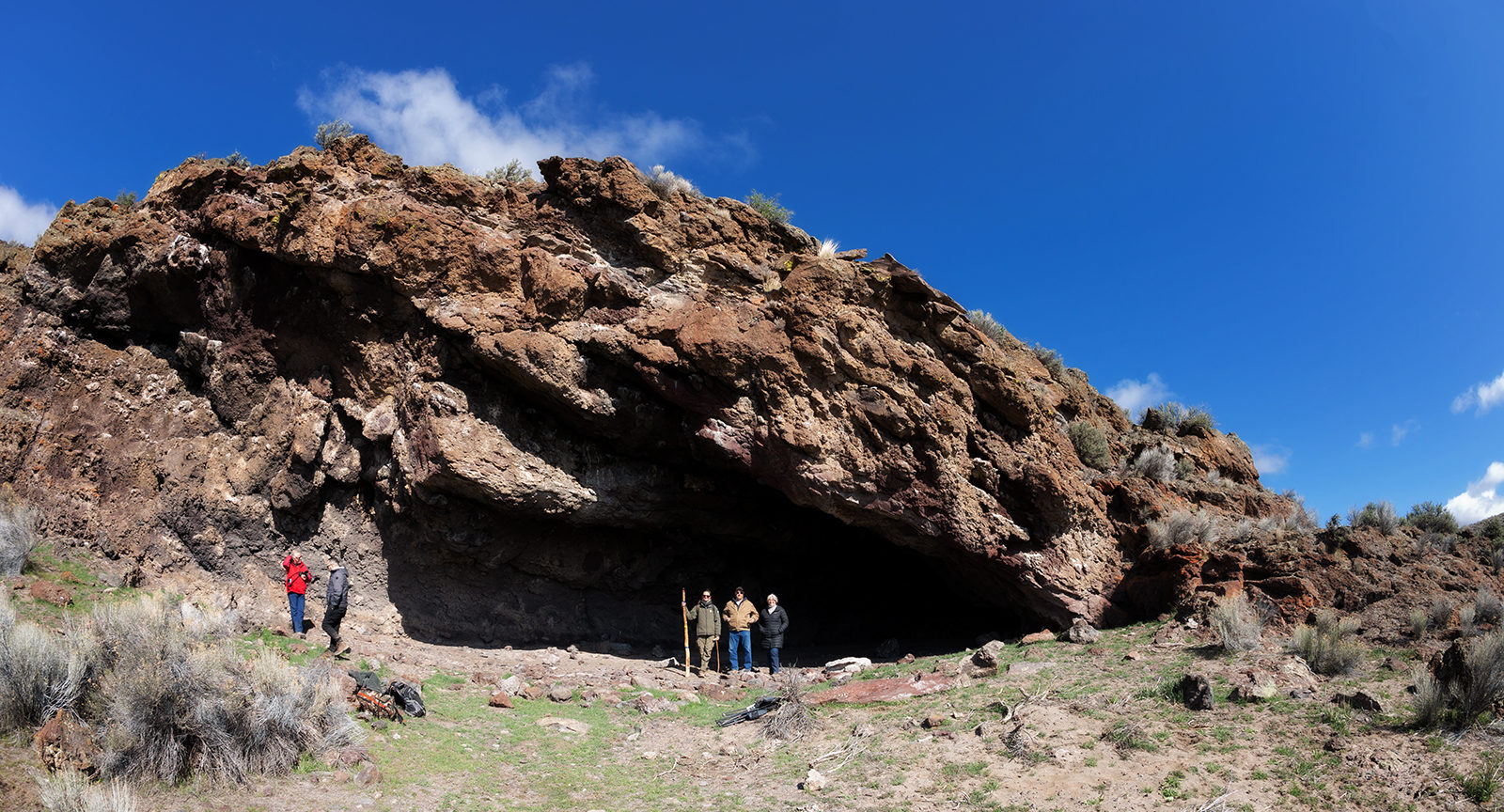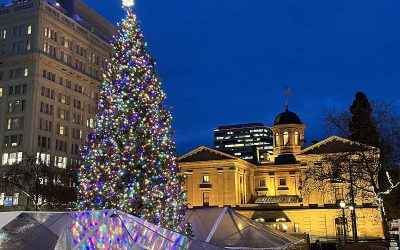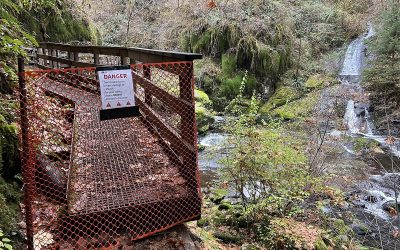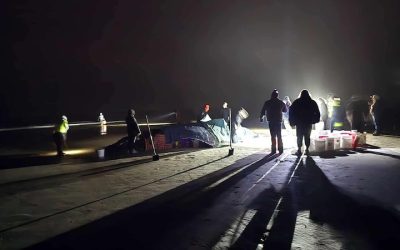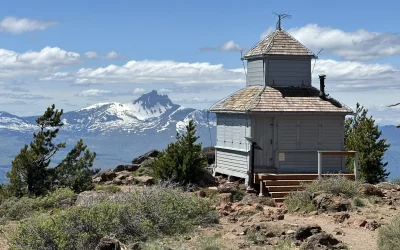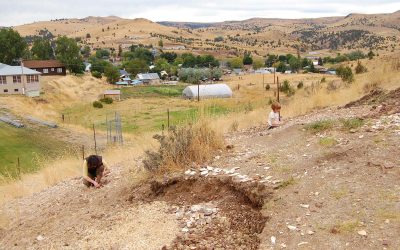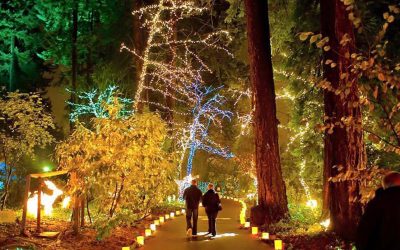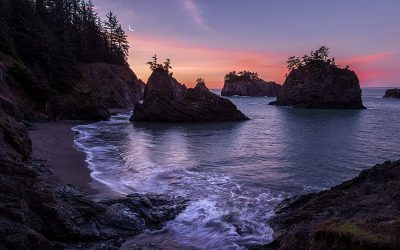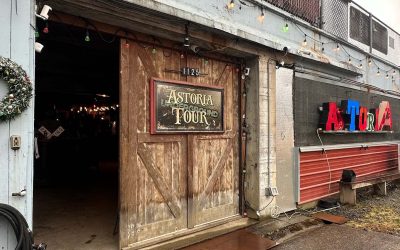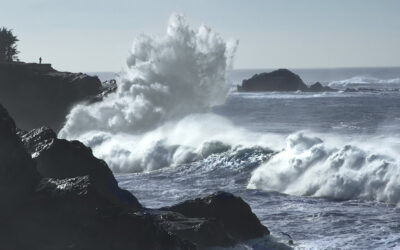A few months ago we brought you an article all about the geological wonder of Fort Rock and the incredible surrounding high desert area of Eastern Oregon's "outback" country. Last weekend we had the opportunity to book a tour of one of the most interesting and historic sites in the Pacific Northwest. This is our photographic journal of this wondrous place.
The Fort Rock Cave
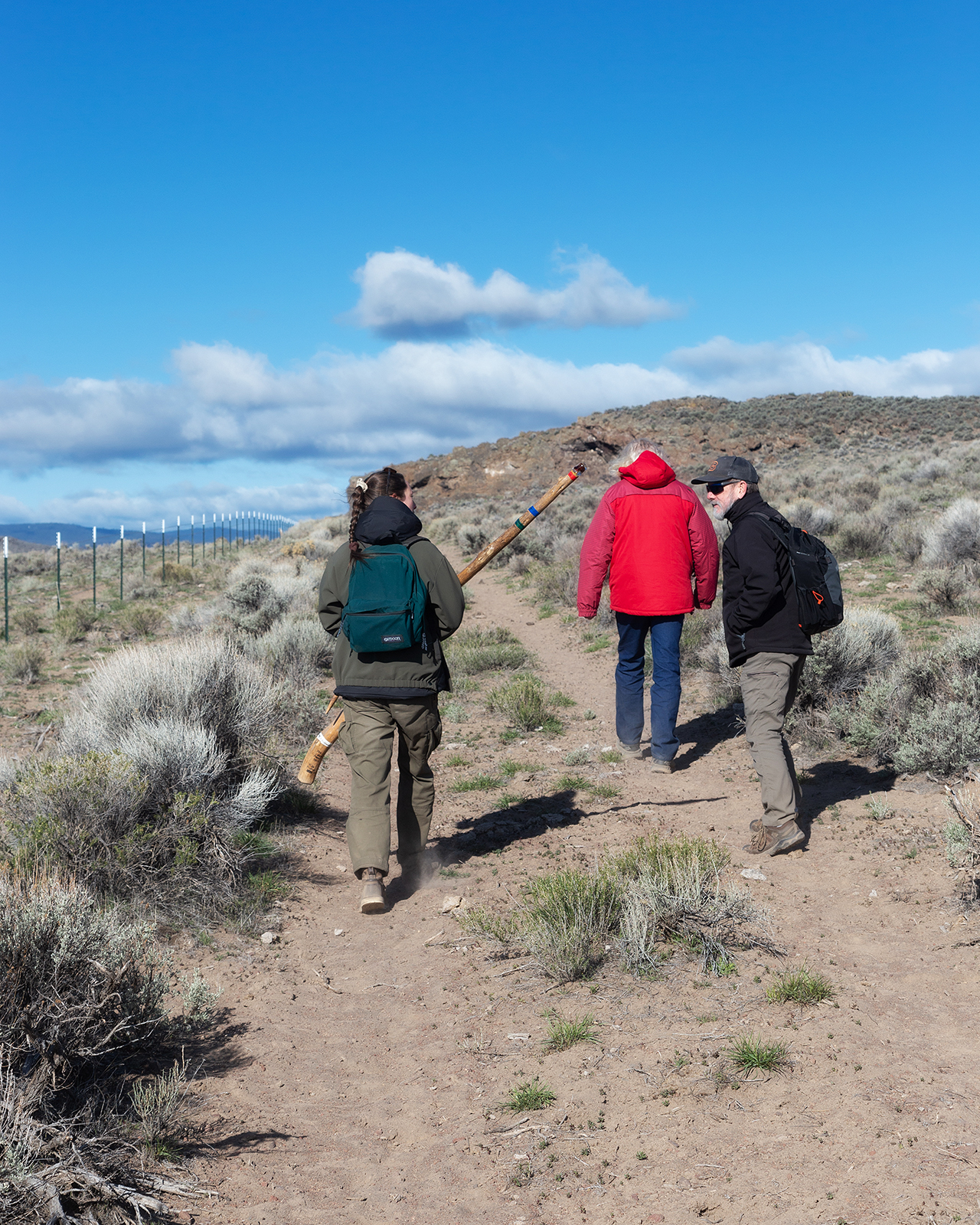
Where our journey begins. / Image via / The Author / thePDXphotographer
Our 9am tour began with a short ride by shuttle from Fort Rock itself to a dirt road leading off into the distance. The official name for our destination is actually "Cow Cave", by 20th Century standards. It's unknown what native peoples would have called it, but we will refer to it by both names for the remainder of this article.
Related: 10 Amazing Pacific Northwest Native Americans You NEED to Know About
The tribes who made their homes in the Fort Rock area were the ancestors of the Klamath, Modoc, and Paiute. The Yahooskin-Paiute bands, known simply as mukluks and numu ("the people") occupied the area east of Yamsay Mountain, south of Lakeview, and north of Fort Rock. Everything they needed for happiness and survival was provided by The Creator and contained within these lands. --Klamath Tribal History
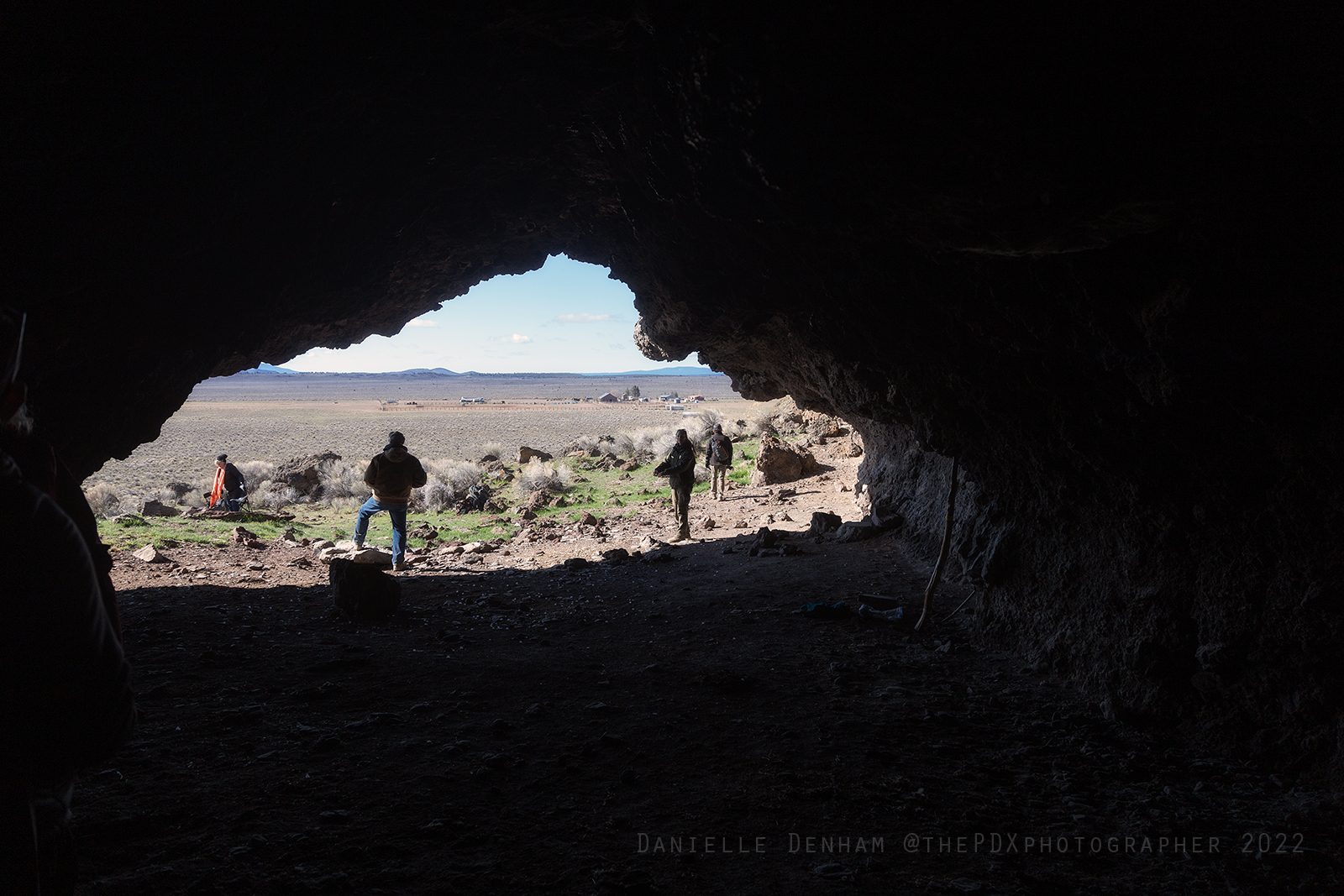
From the inside looking out. / Image via The Author
A quarter-mile hike through sage and rabbitbrush leads to the rocky overhang of Cow Cave jutting out over a dark recess. Today the only inhabitants are barn swallows, bats, jackrabbits, and rodents, but some 10,000 years ago, this rocky cavern would have been used by humans as a shelter, meeting place, or perhaps home.
To put things in perspective, ancient indigenous Oregonians were residing here before the pyramids were built.
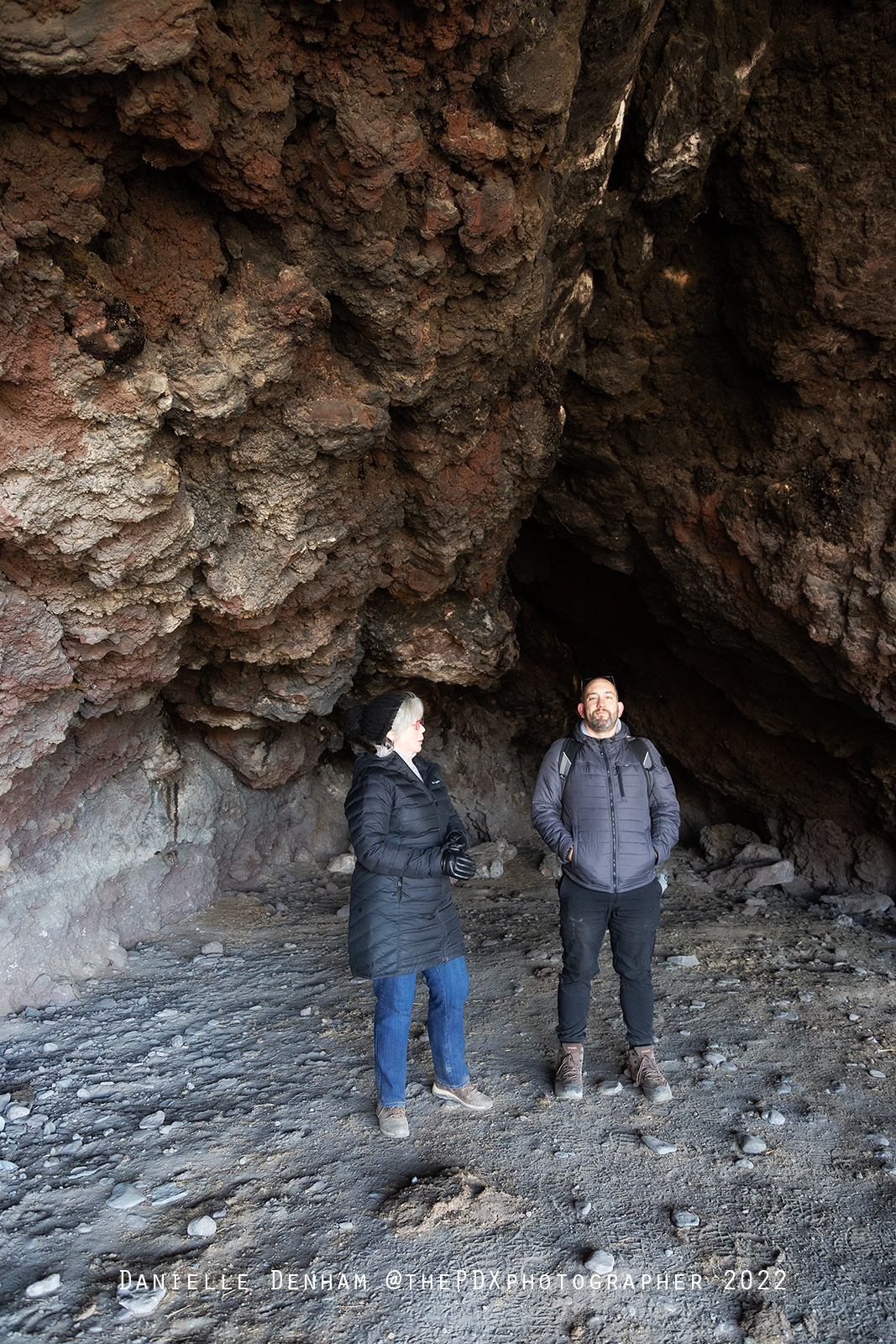
Tyler and our friend Kathi take stock of our surroundings. / Image via The Author
The floor of the cave is bedrock and dust, but at one time it was filled with layers of various earthen strata that are still visible in the walls.
Our guide from Oregon State Parks, Hannah, was both friendly and informative. The wealth of knowledge and native legend she imparted to us was extraordinary.
The Sandal in The Cave
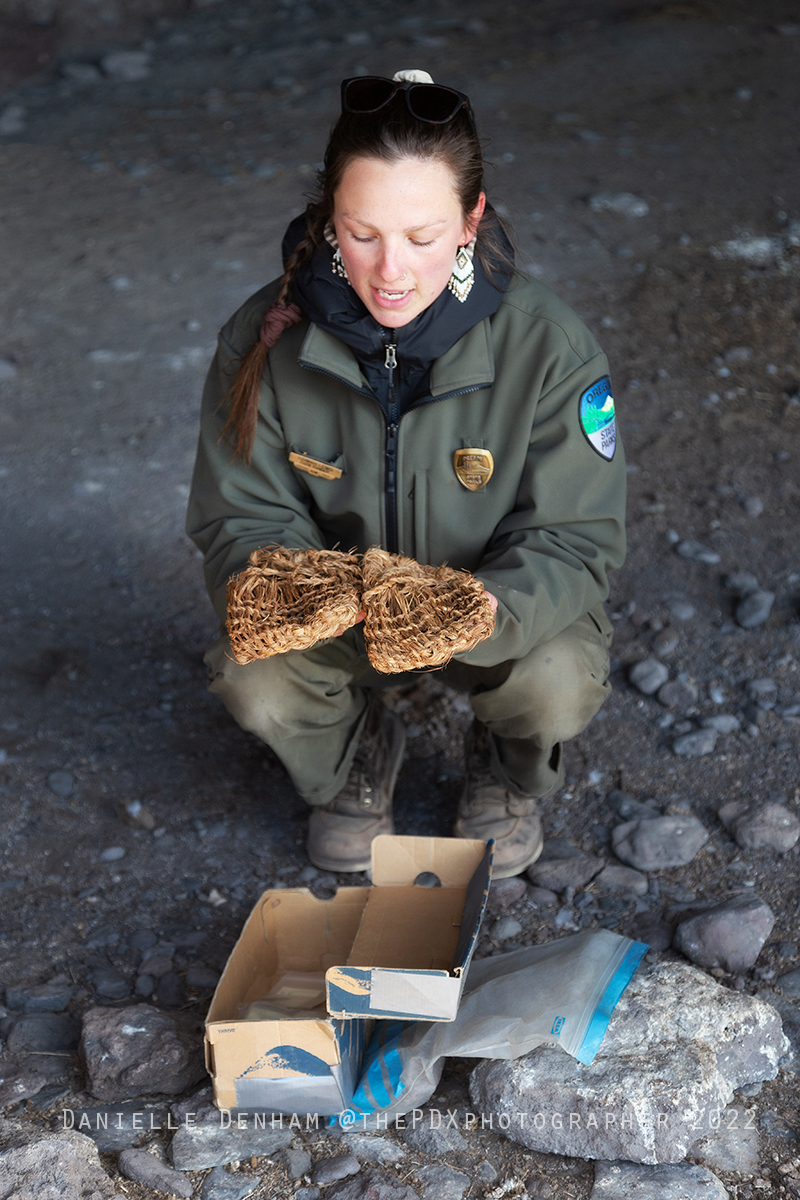
Hannah shows off lovingly-made replicas of Fort Rock Cave's most famous discovery. / Image via The Author
In the 1930s, University of Oregon archaeologist Dr. Luther Cressman saw Cow Cave as something unique. He could never have known that what he uncovered would change modern archaeology forever.
"We excavated one of the Fort Rock Caves in 1938. Down below, the old lake bed was white with alkali in the blazing August sun. Dust devils swirled across miles of shimmering space in the dancing heat mirage. The accumulated refuse of centuries, rodent droppings, dust, ash, all had a characteristic stench that clung to the nostrils, as did the dust to our sweaty bodies."
"As we dug, we went through a bed of volcanic ash from [the] ancient eruption [of Mt. Mazama] and suddenly, under this, came upon a sandal. It was made of a rope of twisted sagebrush bark, unlike any we had ever found. Many more came to light, about 75 in all, every one charred by fires set by the pumice as it fell. Between the ropes of the soles of some of these sandals was caked mud, burned red by the heat of the pumice fires. The wearers did not look on swirling dust devils, as we did on that hot August day, but on a great lake with wavelets lapping against a beach below the cave." --Luther Cressman, The Sandal and the Cave
The sandals were of all different lengths, sized for large feet all the way down to the tiny soles of children. Modern carbon dating and the fact that they lay covered in Mt. Mazama (Crater Lake) ash puts them at 9,000-13,000 years old. Until this point, the Clovis culture of New Mexico was considered to be the oldest known civilization in North America and known as "Clovis First". The Cow Cave discoveries changed that with a single shoe and were further backed up in the following years by DNA evidence from the nearby Paisley Caves.
The Fort Rock sandals are the oldest directly-dated footwear in the world.
Currently, you can view the originals at:
- The University of Oregon Museum of Natural & Cultural History, Eugene
- The Klamath County Museum, Klamath Falls
- The Oregon Historical Society Museum, Portland
- The Nevada State Museum, Carson City, Nevada
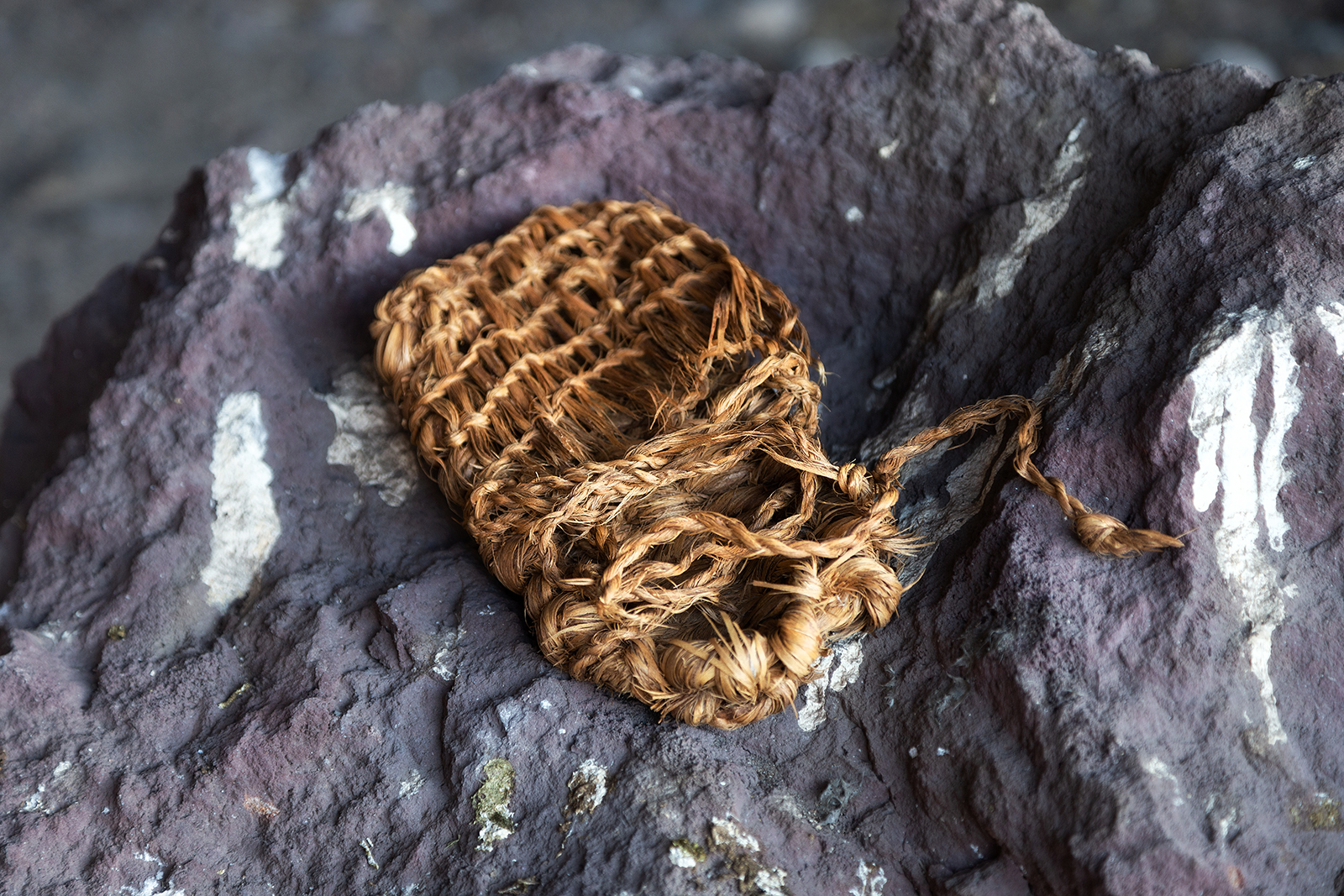
Fort Rock Cave sandal, modern replica. / Image via The Author
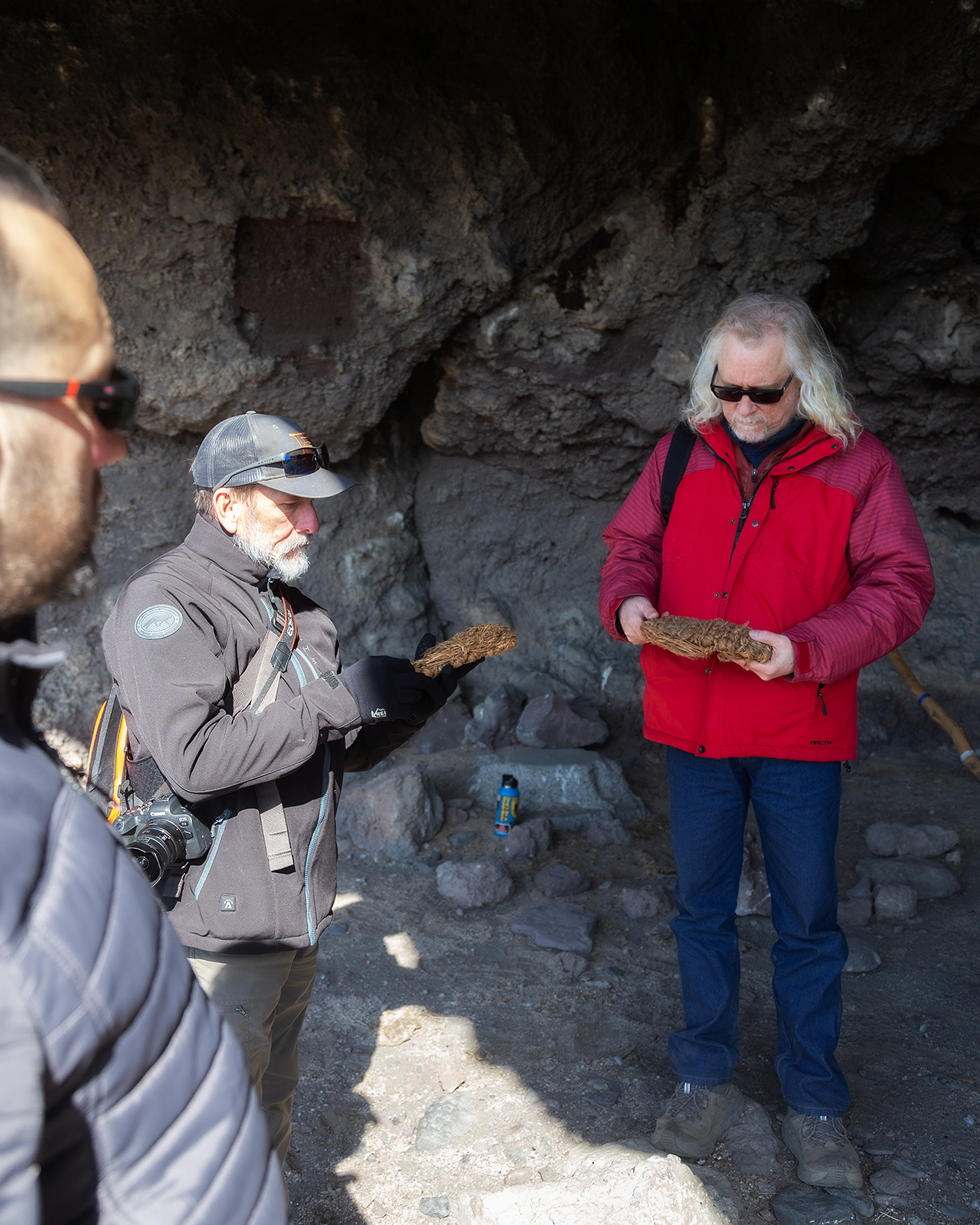
Oregon Photographers Gary Randall and Gary Calicott contemplate the beautiful workmanship that went into making the sandal replicas. / Image via The Author
Besides the sandals, many other artifacts were found in Cow Cave including Native American tools, campfire remnants, and coprolites (fossilized poop!).
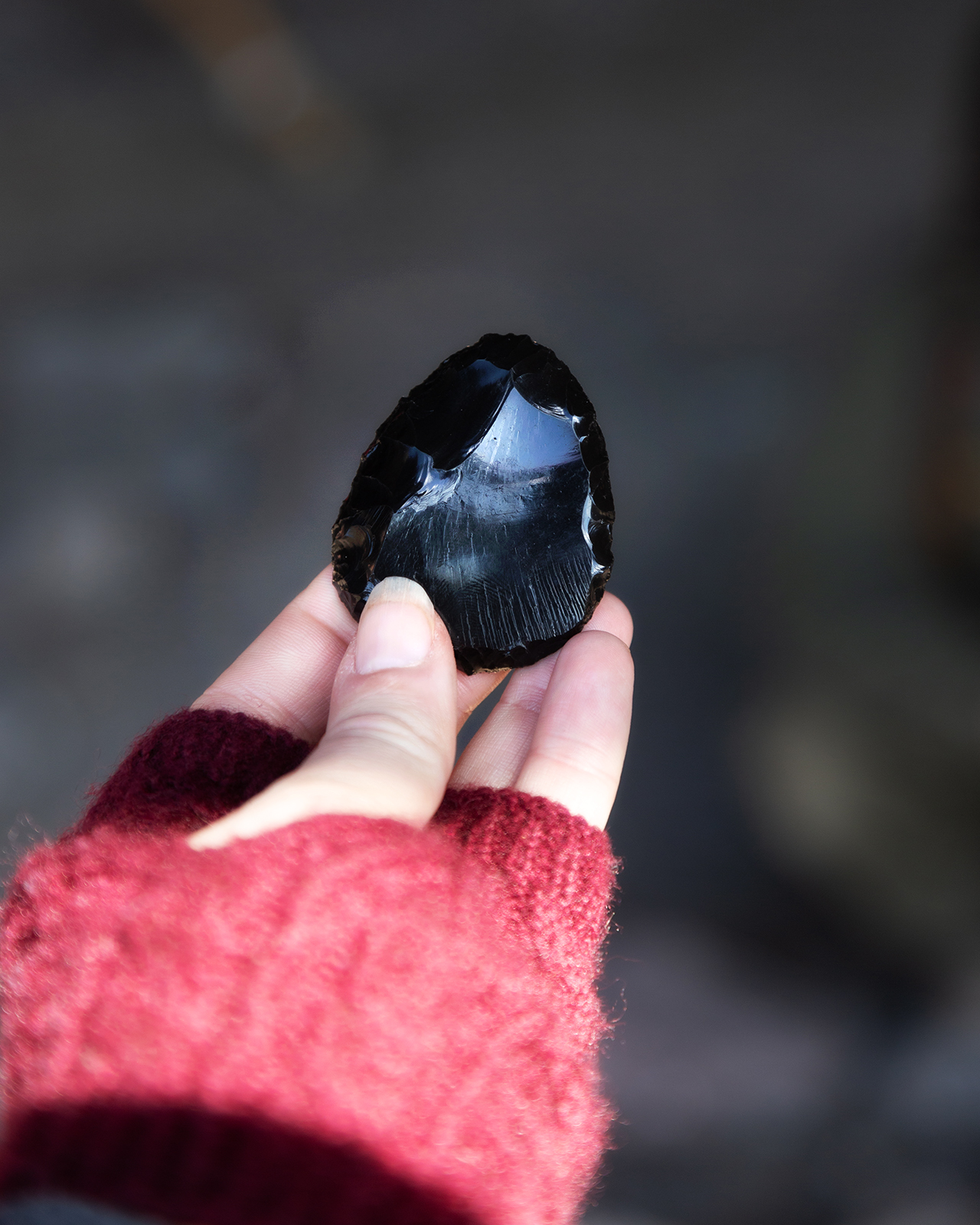
An example of an obsidian scraper tool, replicated from ones found in Fort Rock Cave. / Image via The Author
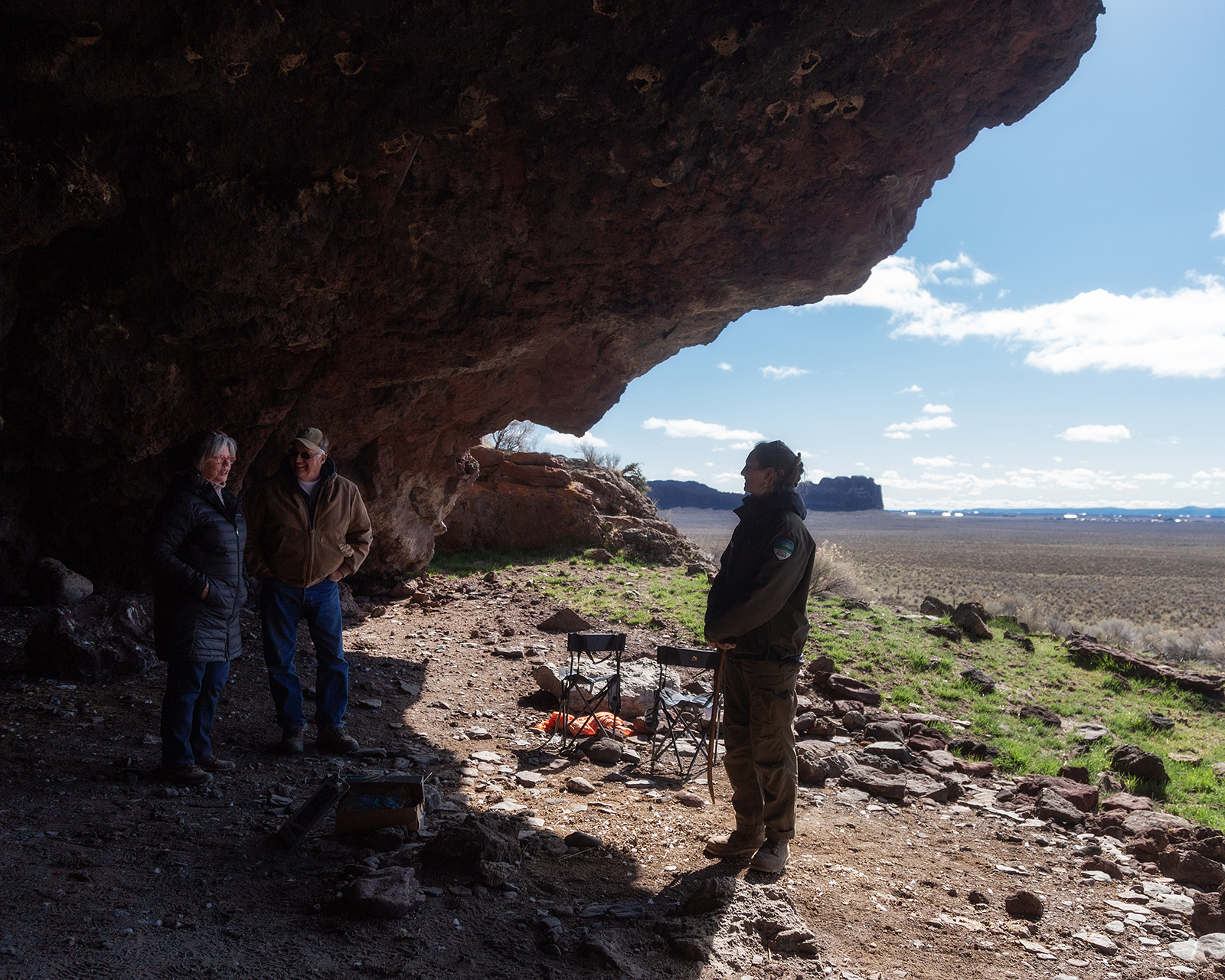
Our guide Hannah relates information about Fort Rock and the surrounding valley. / Image via The Author
As mentioned in Cressman's quote above, the valley surrounding Cow Cave was once a marshy, ancient lake bed, far different than the high desert landscape we know today.
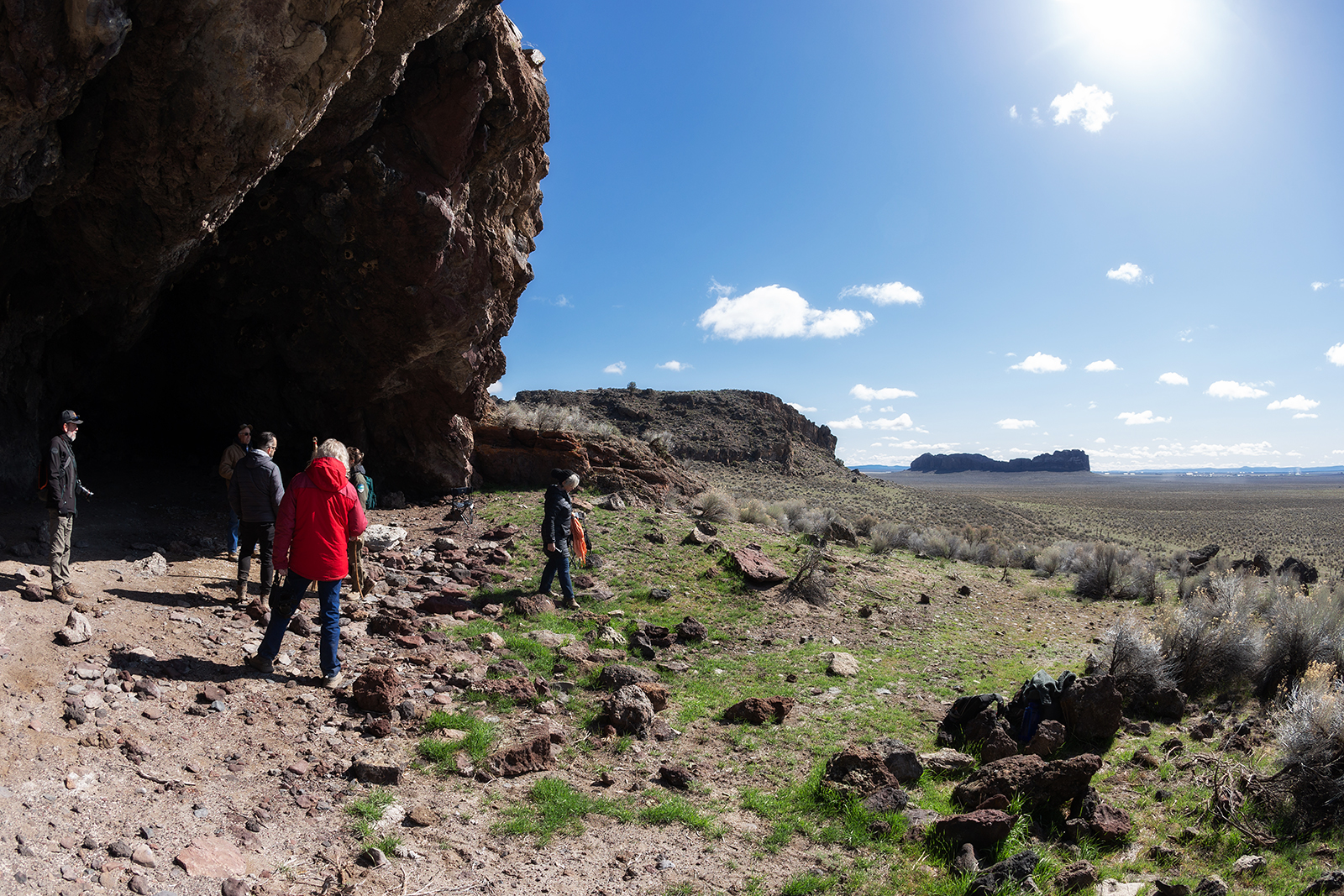
A view of "the Fort" from Cow Cave. Natives would have gazed across lush marshland teeming with waterfowl. / Image via The Author
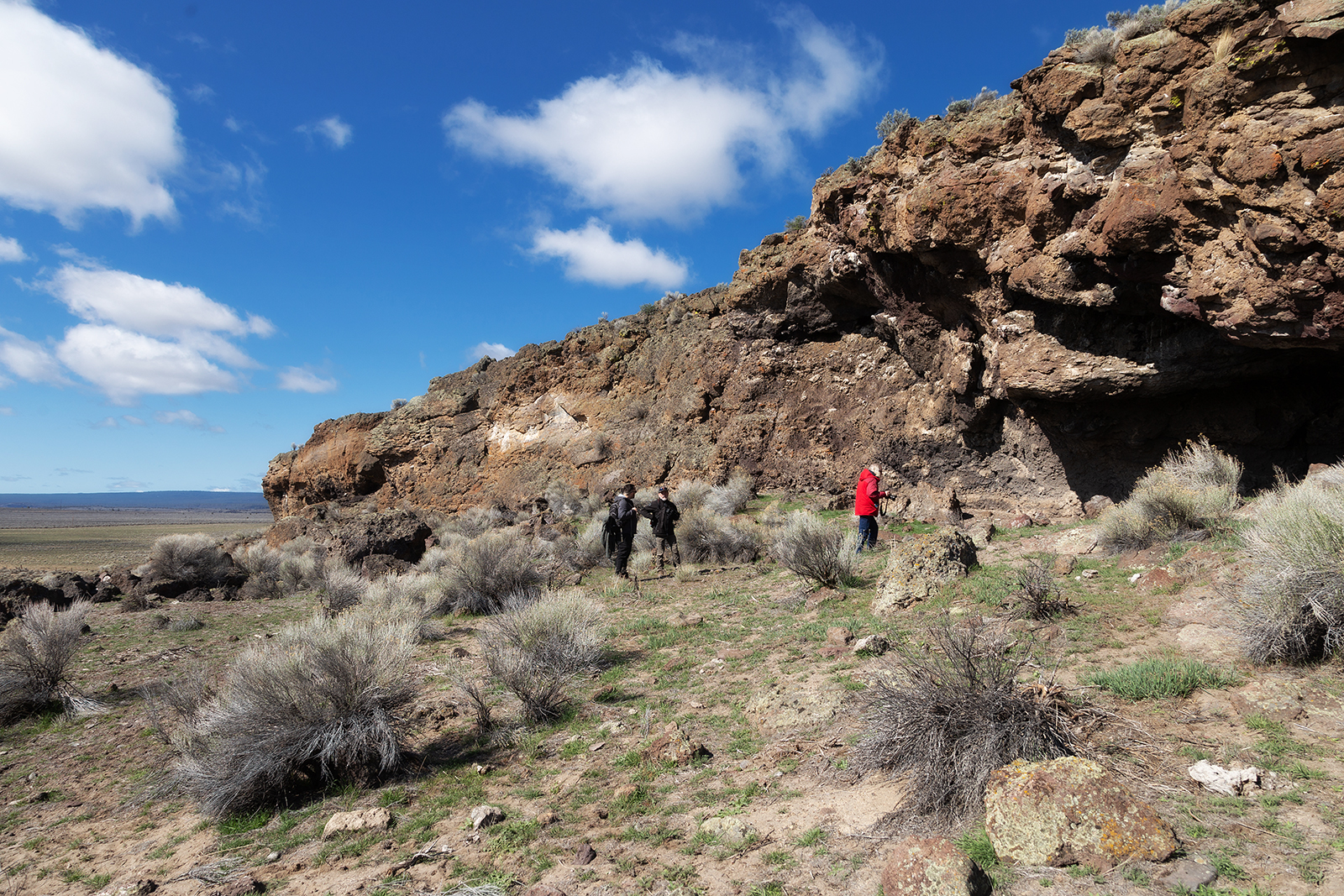
Sagebrush still dominates the landscape; the same material used by indigenous tribes to craft their sandals thousands of years ago. / Image via The Author
Related: Peel Back Layers Of Time At the John Day Fossil Beds Sheep Rock Unit
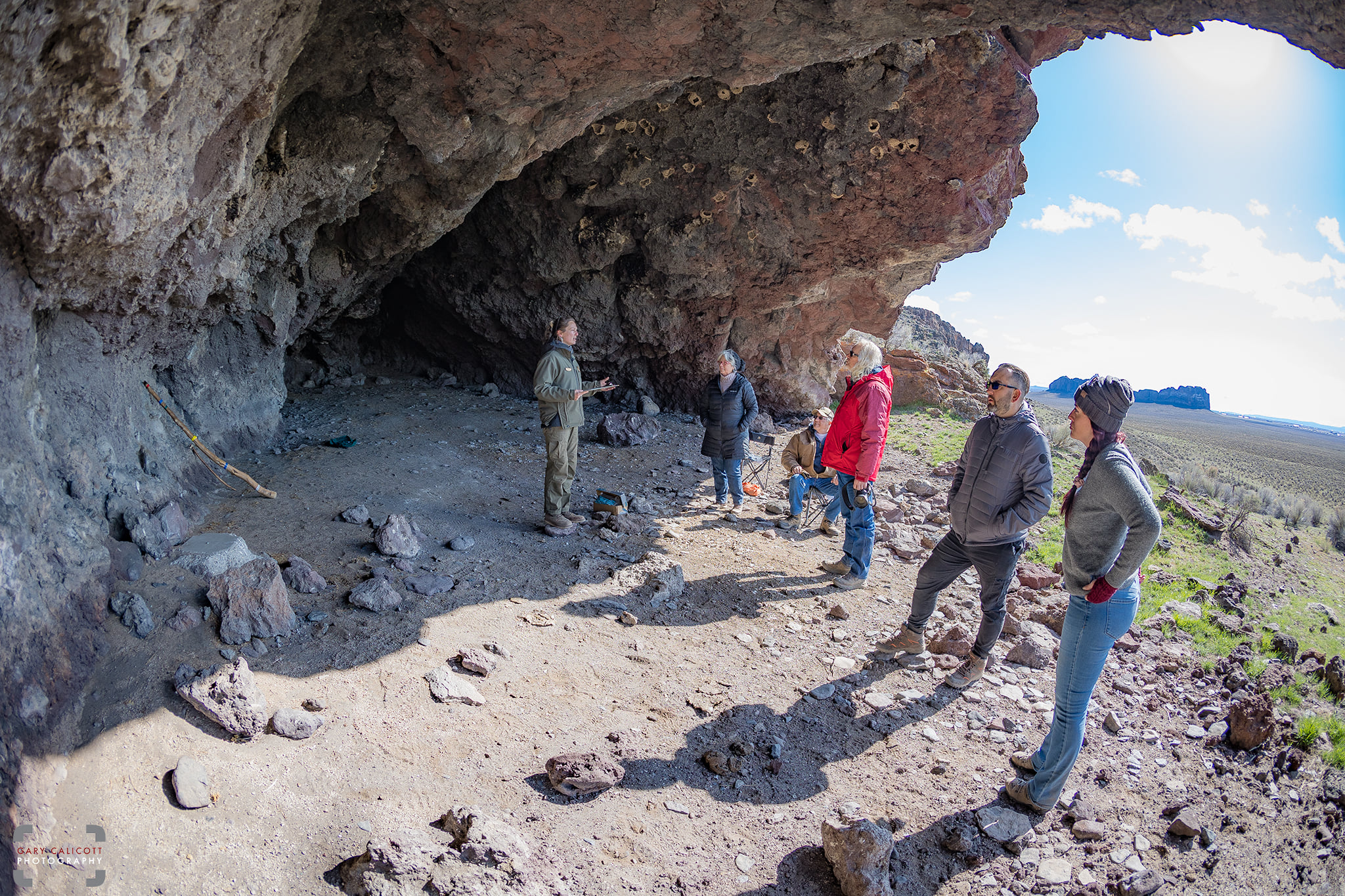
Tyler and I stand on the right with our fellow cave-goers. / Image via / Facebook / Gary Calicott
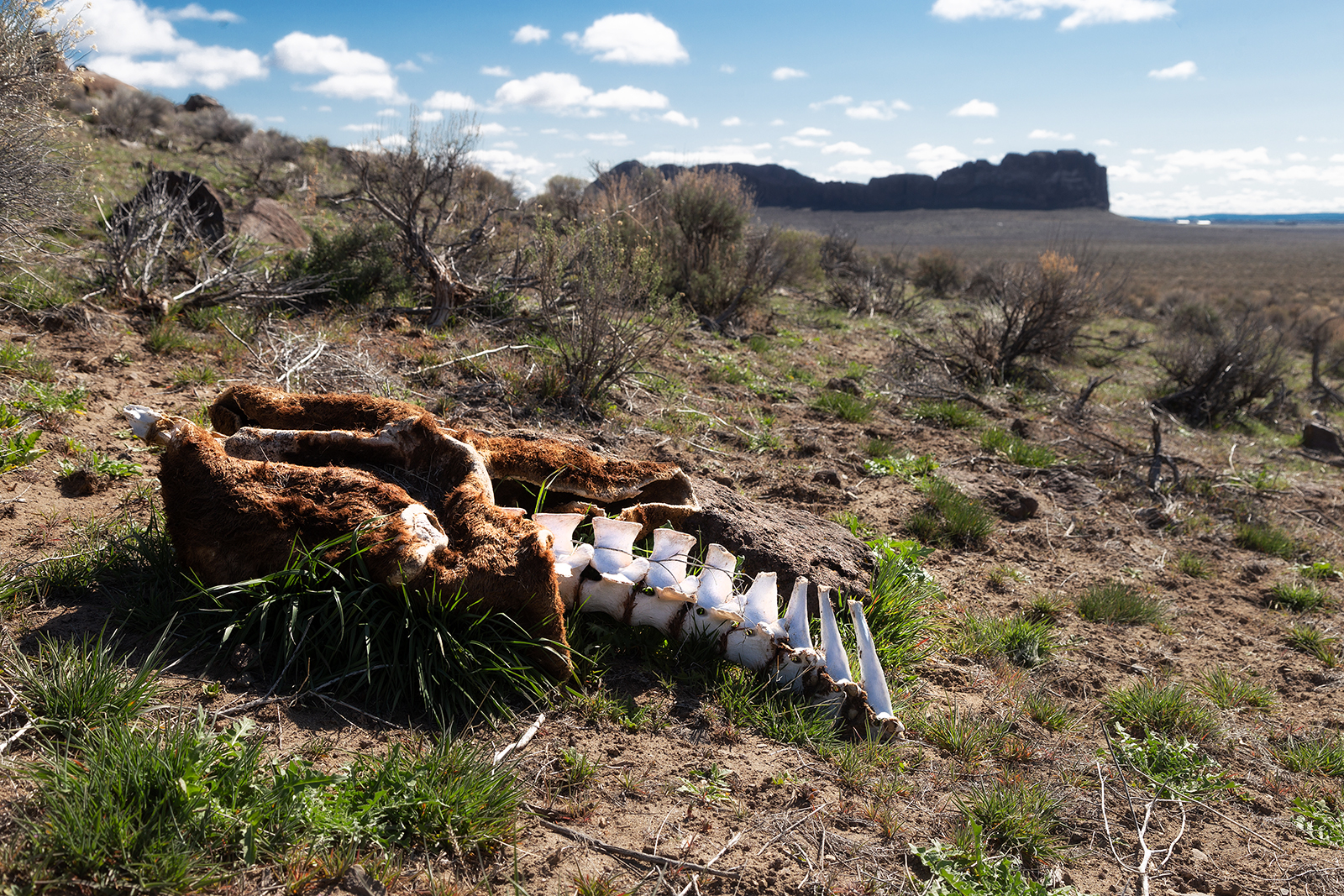
Desert life today can be harsh. What once was a grazing bovine near Cow Cave exists now as hide and spine. / Image via The Author
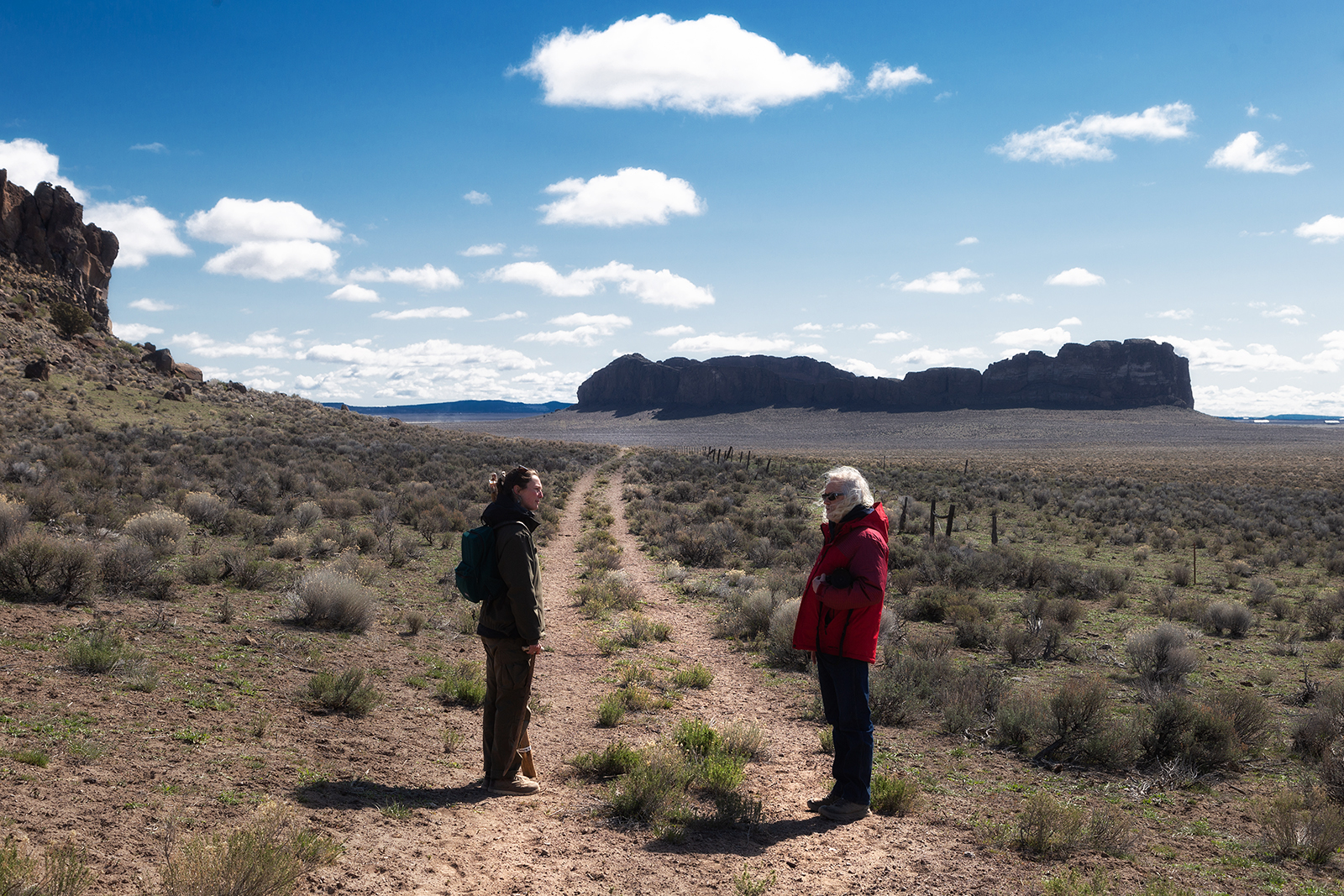
Hannah and Gary commiserate on the road back to Fort Rock. / Image via The Author
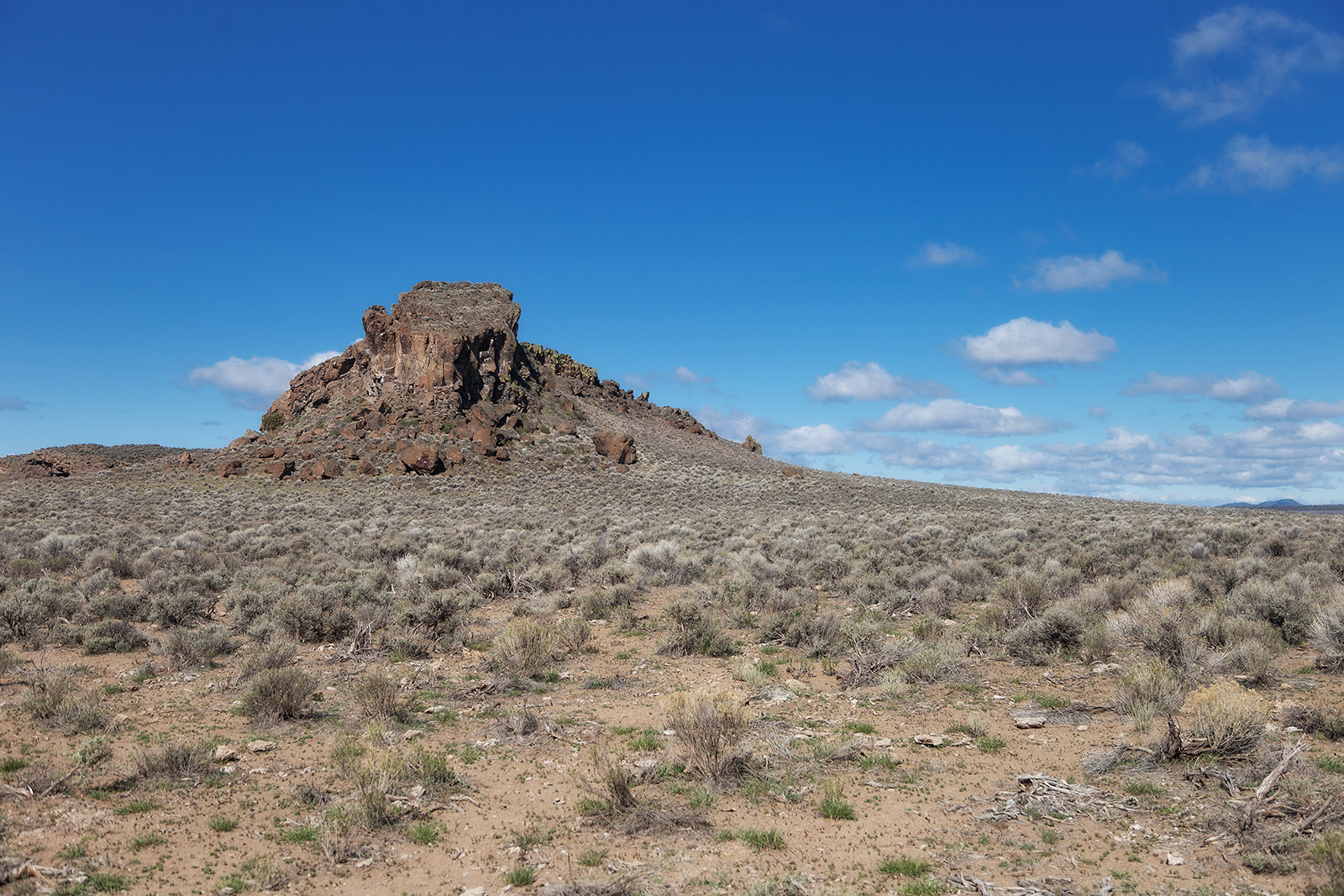
Looking back from whence we came. / Image via / The Author
We can't recommend this amazing and informative tour enough. 2022 tours are currently booked, but mark your calendars for 2023 to explore Fort Rock Cave yourselves. The property is historically sensitive and closed off to the public unless booked by guided tour via Oregon State Parks.
Post-Cave-Tour Side Trip
As it was still early in the day, we explorers unanimously decided another adventure was needed. After a quick lunch of burgers and BLTs at Fort Rock Restaurant and Pub, we loaded up and headed 19 miles south to Christmas Valley's Crack-In-The-Ground.
If you choose to undertake this journey, a 4x4 is highly recommended.
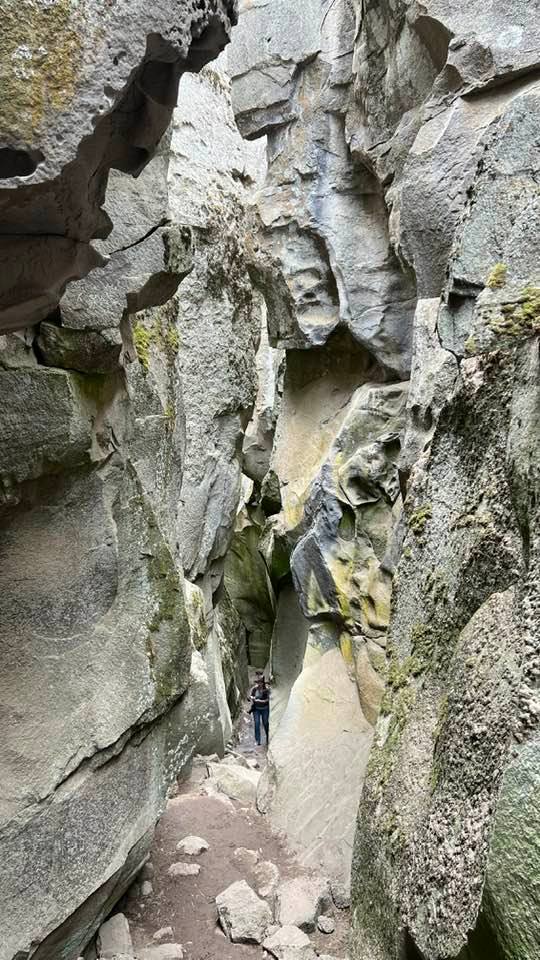
A drone image of me, meandering with my camera through the enormous volcanic fissure that is "the crack". / Image via / Facebook / Bodie Group / Bruce Couch
Crack-In-The-Ground doesn't look especially impressive from satellite imagery, but approach it from ground level and you're suddenly transported into a bizarrely silent world of strange lava flows and skylight caves.
Related: Oregon Sunstones: Where To Dig These Gorgeous Gems for Free
The ancient volcanic fissure is two miles long, 15 feet wide, and up to 70 feet deep in some parts. Hiking through it brings some level ground, but also rocky scrambles to climb over and down. The temperature is around 20° F cooler than surface level, so be sure to bring a warm hat, jacket, and good hiking shoes with traction. On our visit, there was still snow and ice trapped on the floor of the Crack.
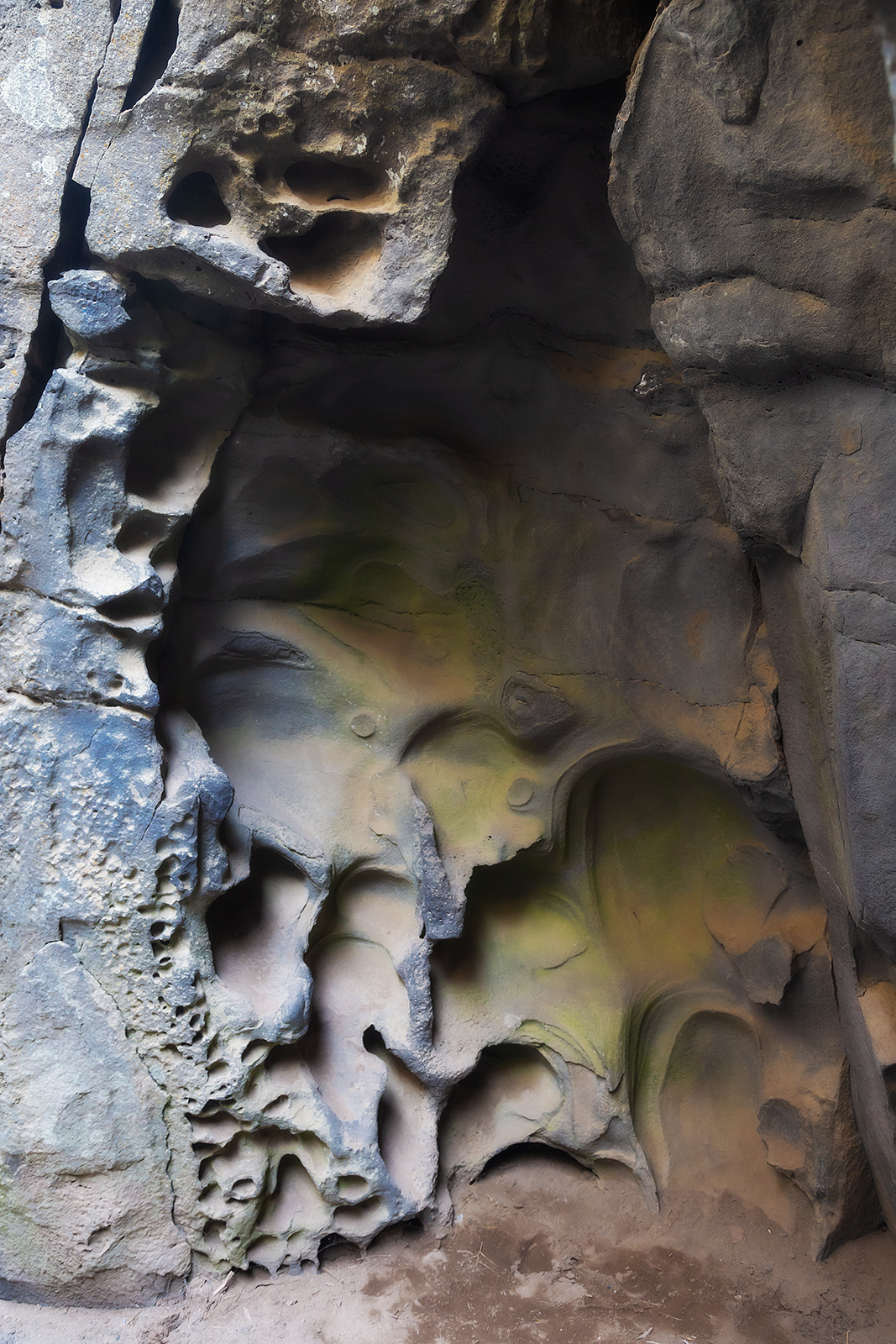
Ancient lava flows created interesting basalt formations as they cooled. / Image via The Author
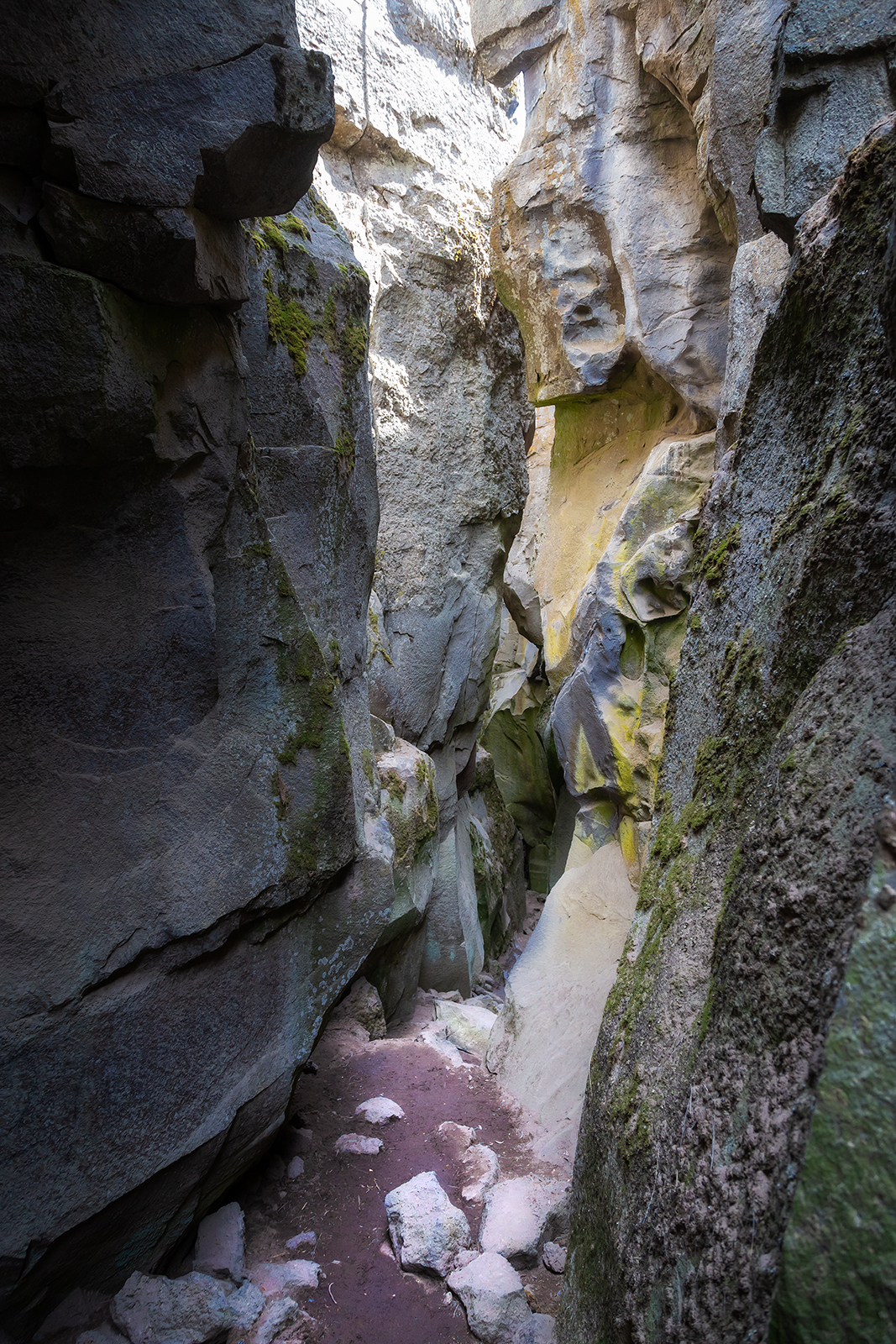
Image via The Author
After a long exciting day of exploring and learning, it was time to head back to Bend, but not before encountering a beautiful abandoned homestead on the way out.
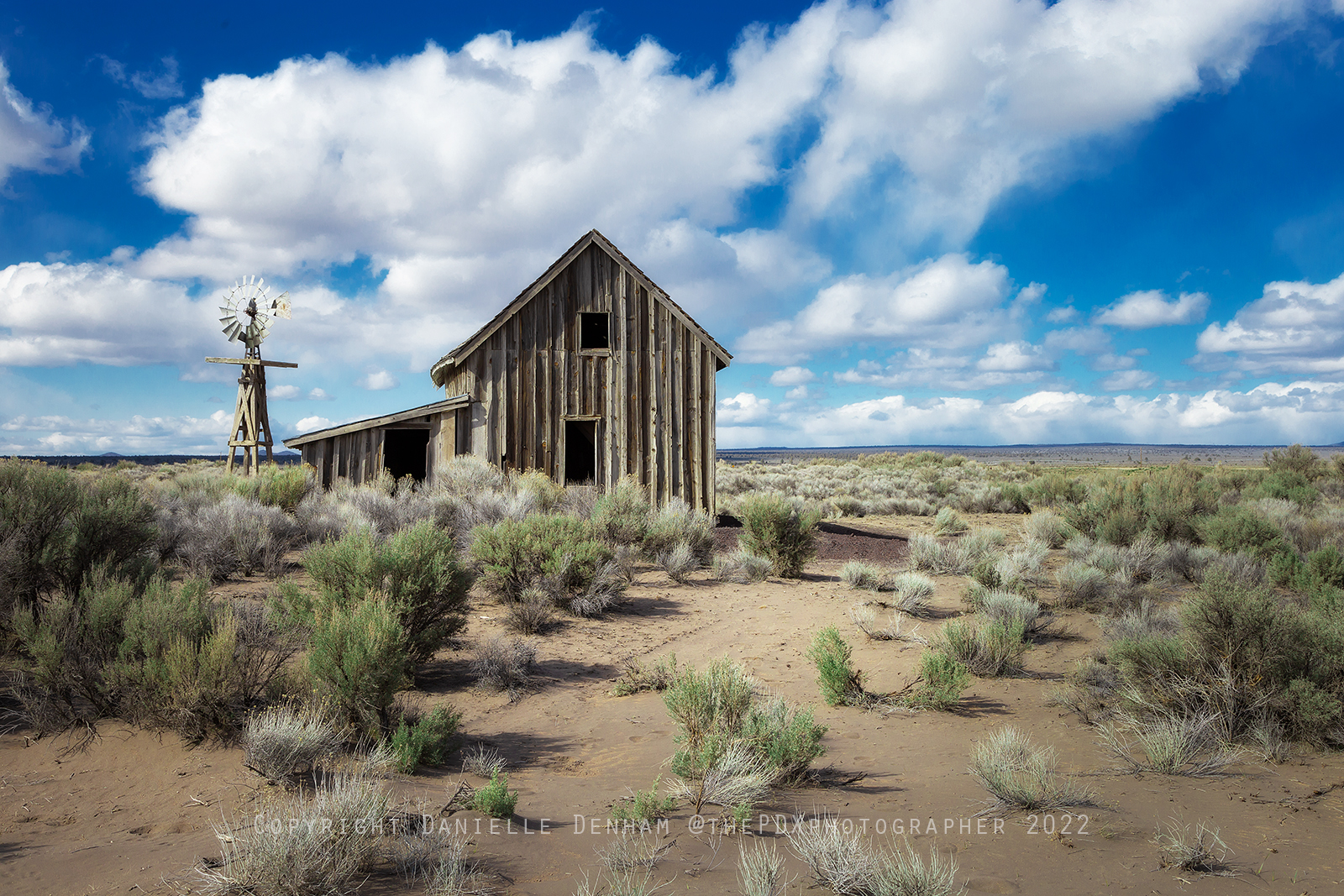
A home that was built to last. / Image via The Author
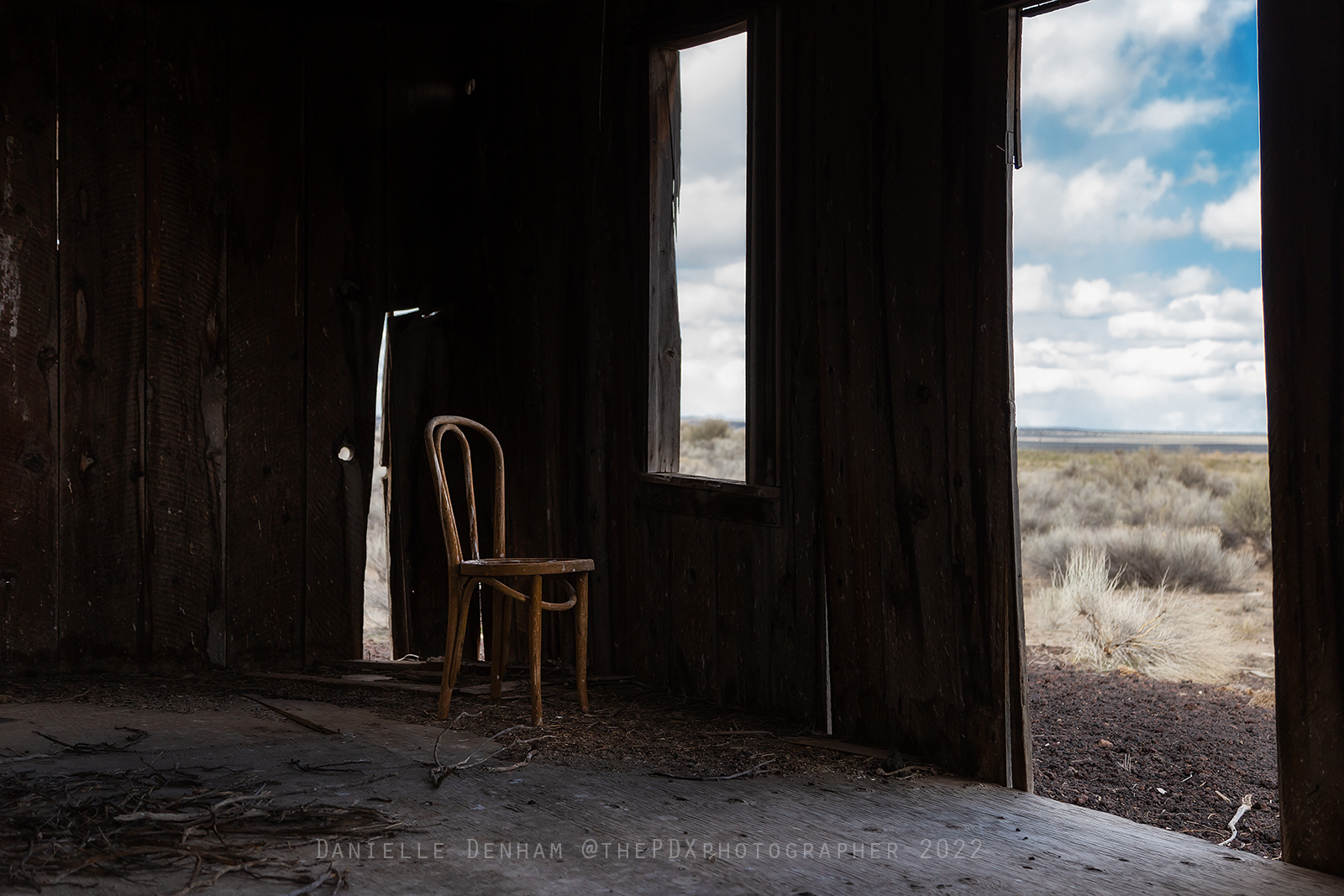
Image via The Author
Related: Haunting Photos of Abandoned Oregon Houses That Have Been Lost to Time
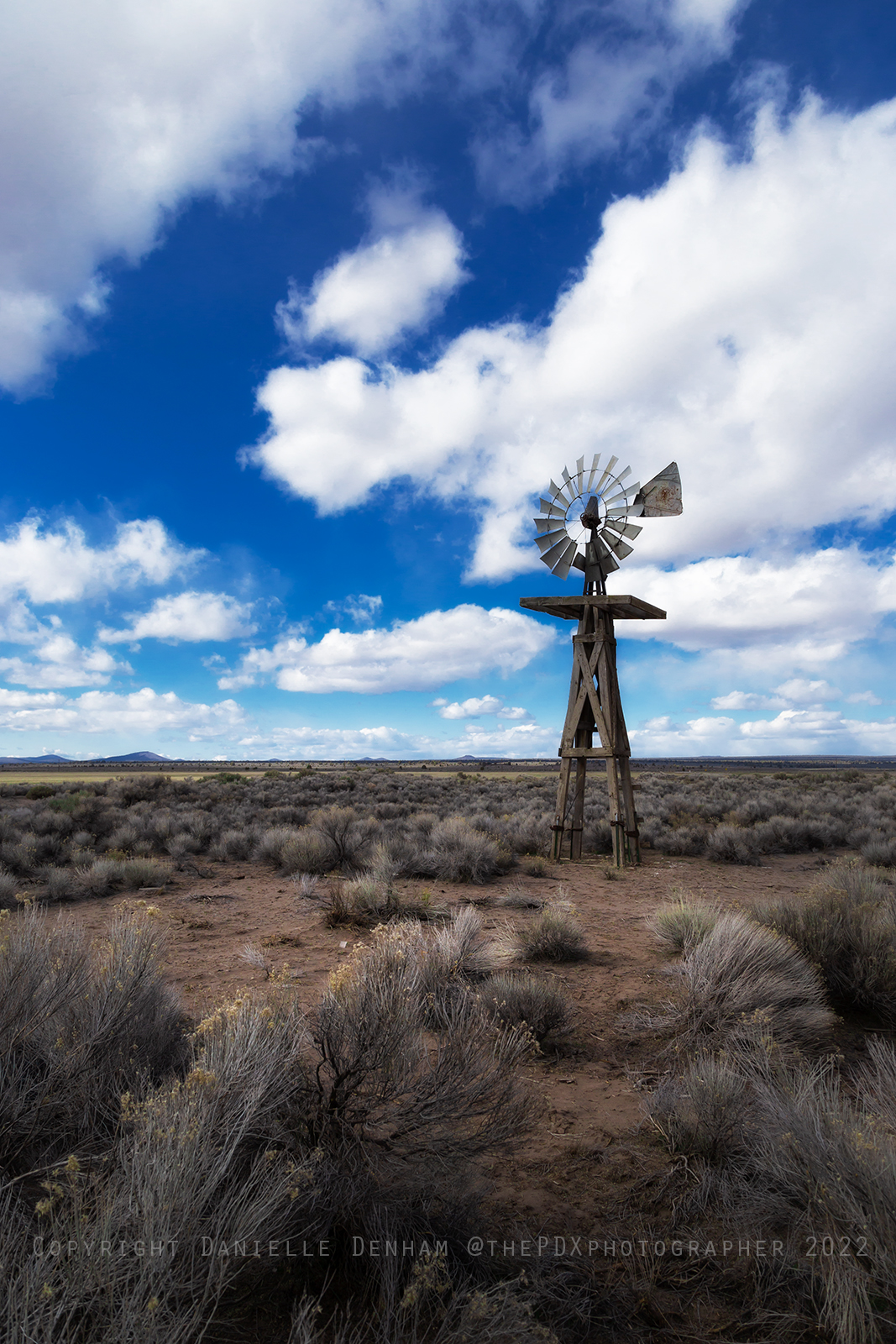
The old windmill, still standing in great shape. / Image via / The Author
How to Book Your Own Tour of Fort Rock Cave and a Map of the Area
As mentioned above, cave tours are currently booked for 2022, but be sure to check back with Oregon State Parks early in 2023 at their website:
In addition, read our full adventure guide to Fort Rock for history and other information:
Fort Rock, Oregon: Your Adventure Guide to This Geological Wonder

